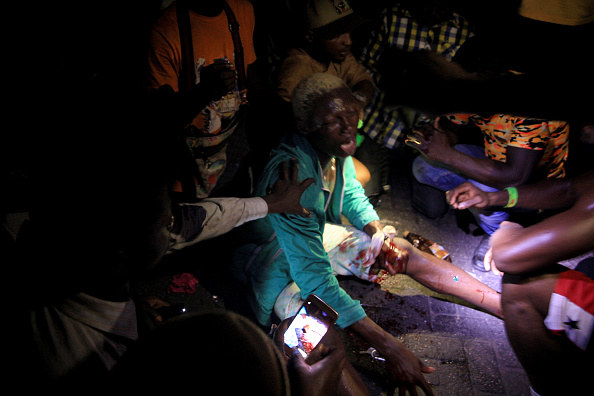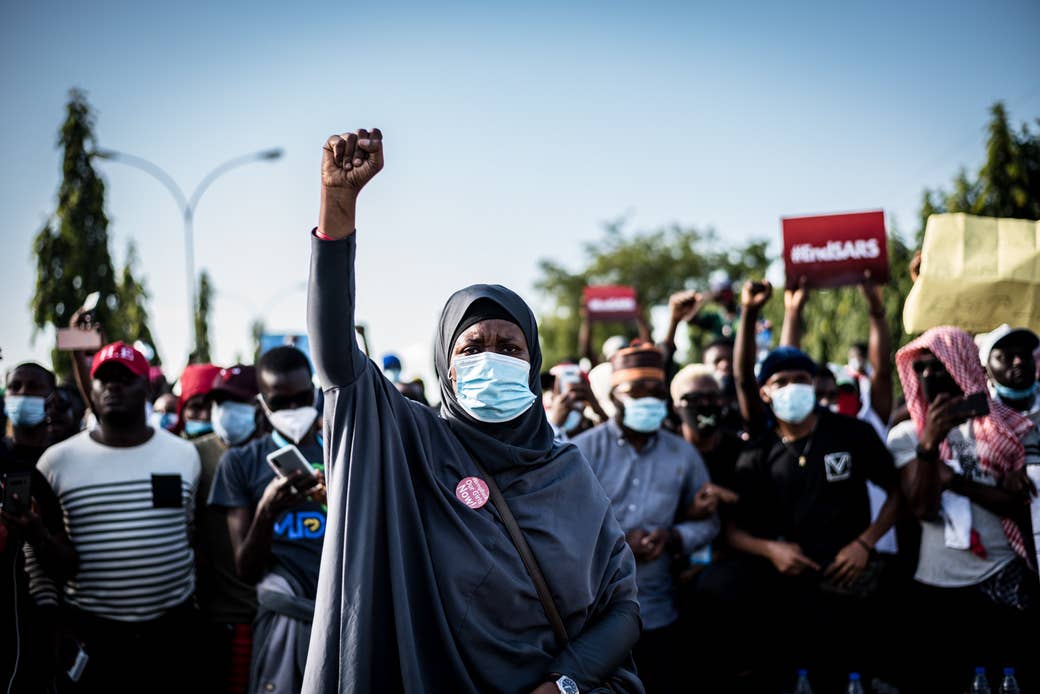
On Oct. 3, in Ughelli, a small town in Delta State, located in Nigeria’s southern region, a sound engineer and father of two, Prince Nicholas Makolomi, recorded a video of a young man’s near-fatal incident with members of the country’s notorious Special Anti-Robbery Squad, known as SARS. Since the unit’s founding in 1992, SARS officers have had a reputation for extorting Nigerian citizens out of money under the threat of arrest, and for engaging in systemic acts of violence, including abuse, torture, and extrajudicial executions targeted at those accused of criminal offenses. Initially founded to tackle a heavy increase in armed robbery in Lagos, SARS spread to all 36 states in the country within a decade. But from its early days, the irony of the unit has been that citizens view it more as responsible for propagating violence in the country than deterring it.
While full details of the event remain unclear, Makolomi’s video, which went viral on social media, showed SARS officers shooting at Joshua Ambrose, the young man in question, who had either fallen out of the moving vehicle he was in — or had been pushed by SARS personnel. There have been no reports to suggest that Ambrose committed any wrongdoings in the interaction. Contrary to the initial online commentary that accompanied the videos, Ambrose did not die but was rushed to the hospital to receive medical attention. For his efforts, Makolomi was arrested and jailed, although released a few days later, according to Nigeria’s Vanguard News. (The outlet recently reported that Makolomi was rearrested on Dec. 14 by another Nigerian police unit, the Force Intelligence Bureau (FIB), and is in custody in Abuja, the nation’s capital.)
But the events in Ughelli were the spark that lit the proverbial fire, as people in the town attacked police in retaliation for the Ambrose incident, later resulting in the death of one protester and one police officer.
Demonstrations, which began with little to no national awareness in the small town of Ughelli following Makolomi’s Oct. 3 recording, soon spread to Warri, a bigger city nearby. The cause soon began to pick up steadily in other parts of the country as more people gained awareness of the episode over the next several days. Then, after other fatal incidents involving SARS, including the death of a bystander, Jimoh Isiaq, in Oyo State in southwestern Nigeria on Oct. 10, the size and intensity of the demonstrations increased in Lagos, the country’s most populous city, as well as in Abuja.
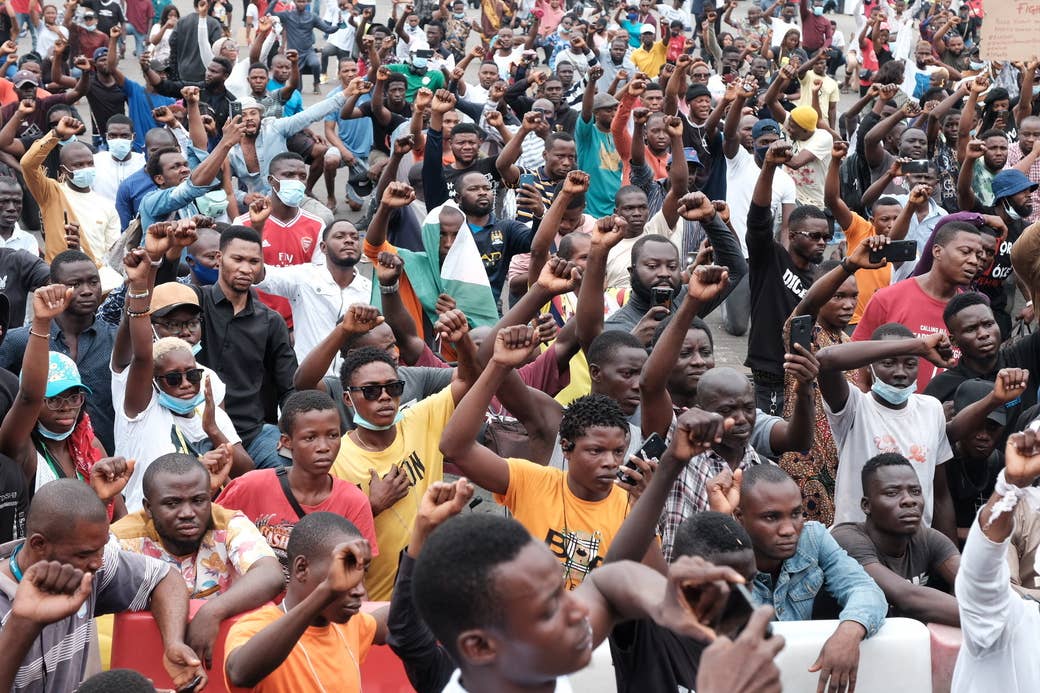
Thanks in large part to social media, the hashtag #EndSARS became a global rallying cry. The Feminist Coalition, an association formed to further the cause of equality for women in Nigeria, coordinated aid for protesters. They helped funnel medical help for demonstrators on the ground, provided legal consultations, and food and water in addition to organizing fundraising drives.
Outside of the country, Nigerian communities in the US, the UK, and Canada led the charge in different cities, protesting not just the existence of SARS but Nigeria’s systemic negligent and nefarious government.
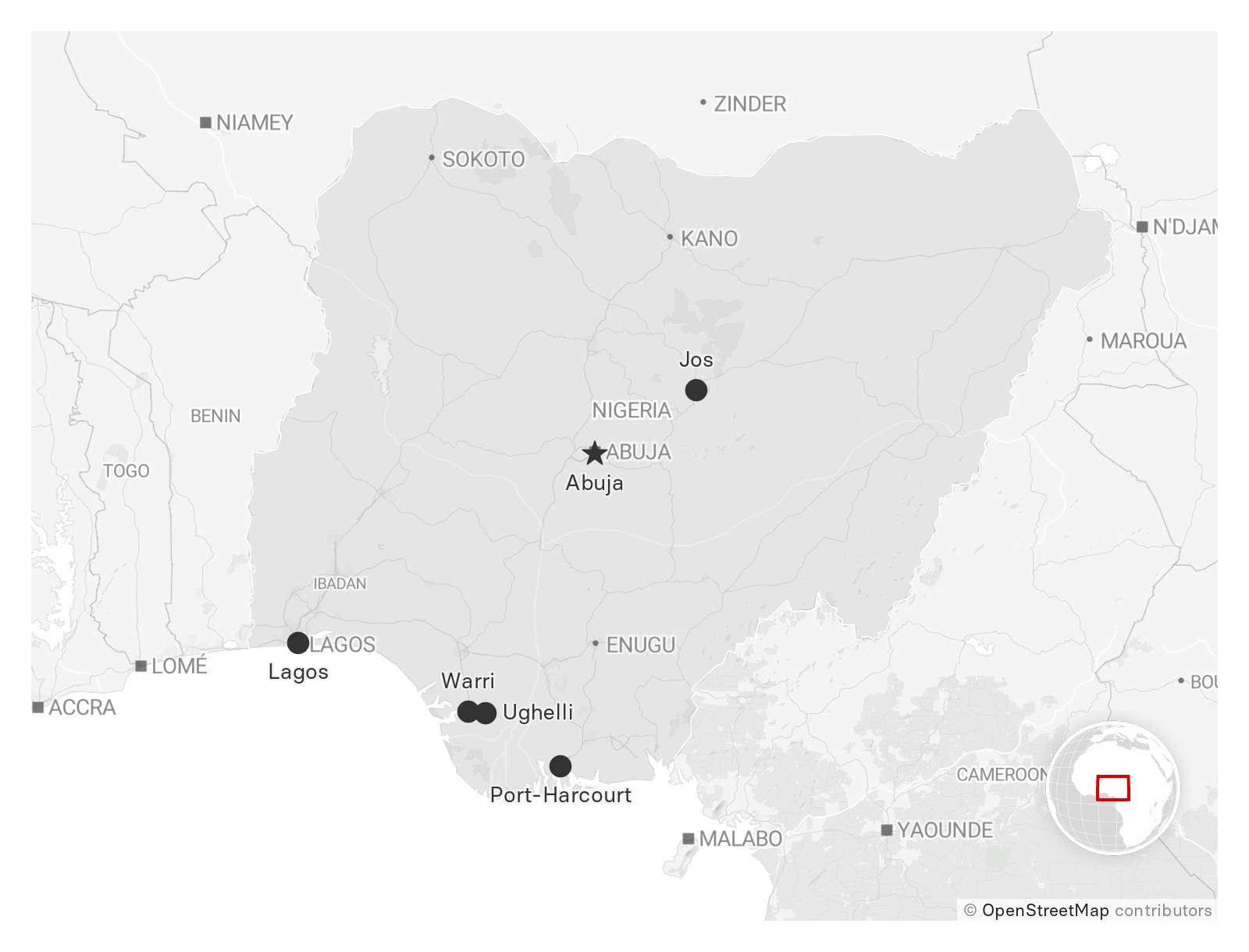
Back in the country, protests reached a nadir on Oct. 20 when Nigerian Armed Forces opened fire on unarmed demonstrators in the middle-class area of Lekki, Lagos. The number of deaths is still disputed, but initial reports by Amnesty International put it at 12 people. Ostensibly to prevent further loss of life, many of #EndSARS visible organizers called for an end to protests as state governors began to set curfews for residents. On Oct. 22, the Feminist Coalition ended its fundraising. From there, demonstrations waned across all locations of the country and outside of it. For weeks, however, the government and army denied shooting at protesters, only admitting to the catastrophe, nearly a month later.
Given the rapid spread of information and disinformation throughout the #EndSARS protests, garnering a full picture of what happened is still an ongoing process. In order to understand the vastness of the movement in October, BuzzFeed News turned to photographers in different parts of Nigeria: Warri, Lagos, Abuja, Port Harcourt, and Jos, and the diaspora. The documented narratives of these photographers tell stories in the way only pictures and those who take them, can.
Warri
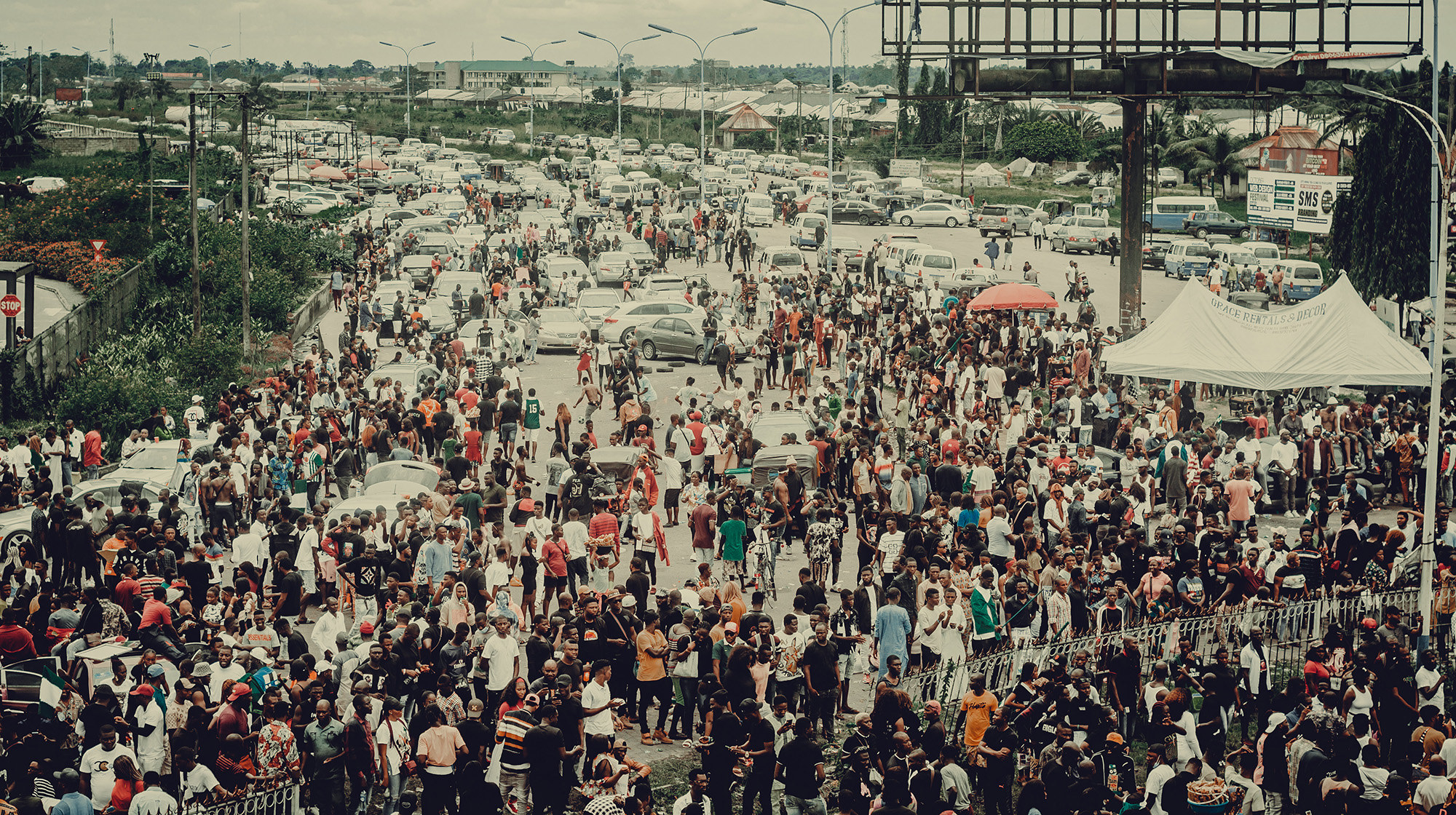
An oil hub in Delta State, Warri's people, who affectionately call it "Waffi," are loud and proud about speaking the country’s best Pidgin, never “carrying last,” and being Nigeria’s funniest citizens. It’s a historically diverse city consisting mainly of people from Ijaw, Itsekiri, and Urhobo ethnic groups, and people from all over Nigeria come to Warri for jobs in the oil industry. Because of the environmental damage done by oil companies and the poverty experienced by indigenes who seldom benefit from the country’s oil wealth produced on their ancestral lands, Warri is no stranger to dissent. Warri is also less than 45 minutes from Ughelli, and photographer Lucky “Mamu” Unu, who is based there, started documenting #EndSARS protests on Oct. 12.
“The protest started quite slowly because a lot of people weren't aware of it but we soon got organized and were able to pass information on the protest location and routes so people started trooping out on the streets and blocking the major roads to make a statement,” Unu said. “From what I witnessed and documented, the people were angry and tired of police abuse and the way the government responded to the protest.”
According to Unu, on Oct. 13 Delta State Gov. Ifeanyi Okowa released a statement that police officers should let protests assemble freely. Following the violence in Lagos on Oct. 20, however, the state imposed a curfew on Oct. 22. Unu still believes the #EndSARS movement made a difference, though he maintains a healthy skepticism. “The officers are no longer on the road at their regular checkpoints or rather [sic] business offices around the city, where they routinely harass and extort money from people. But who knows for how long this peace will last,” he said.
Lagos
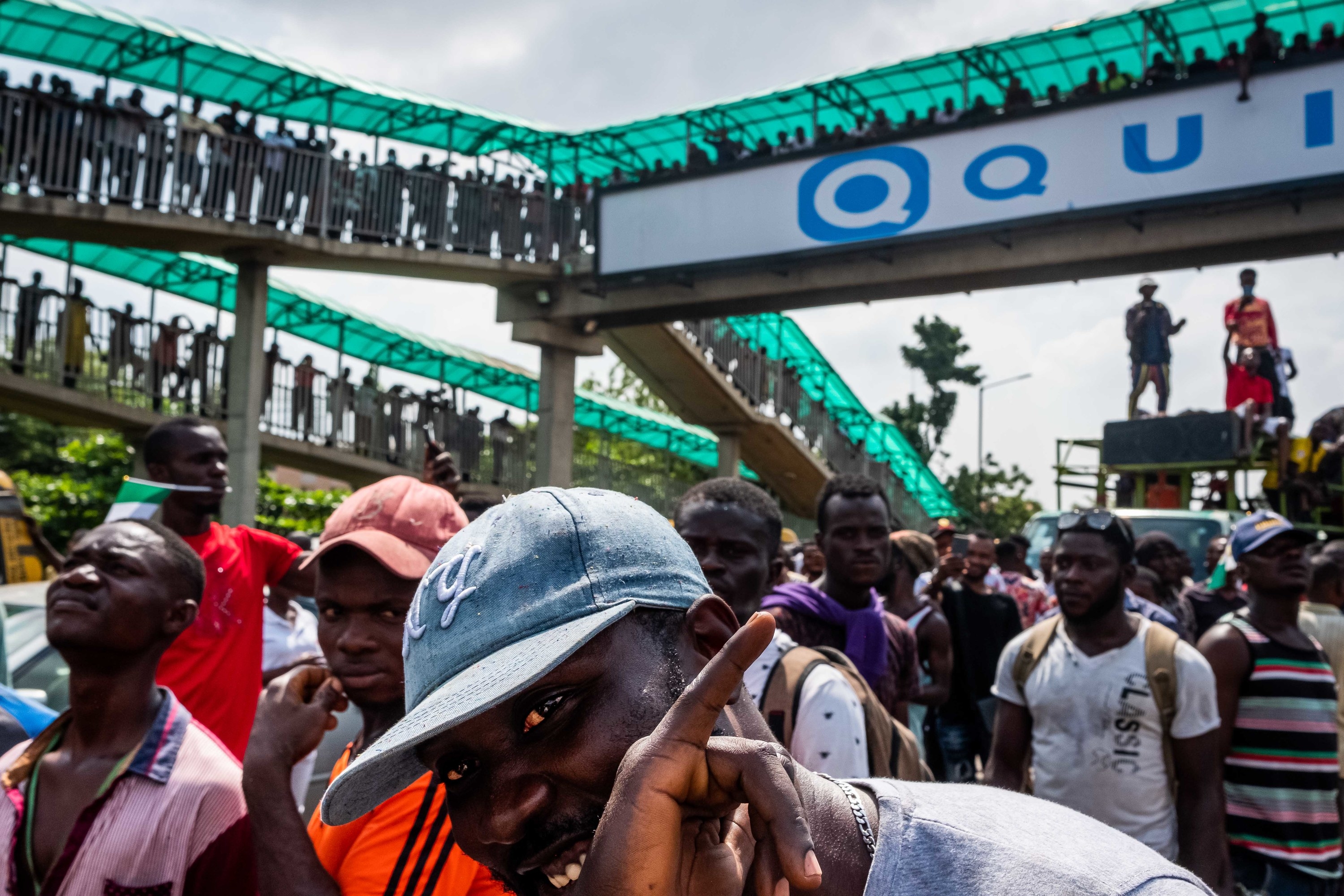
When most people think of Nigeria today, Lagos comes to mind. With an official population just short of 15 million people and its own melting pot of cultures, the city, located in the south of the country, is the cultural capital of Nigeria. Along with its size and influence, its significance in commerce ensures that what happens in Lagos has implications for everyone else in the nation. This was the case in October where protests began steadily but soon transformed into a colossal effort that disrupted the hustle and bustle of the city.
Bernard Kalu began documenting the city’s protests on Oct. 9. Kulu noted that when the government’s initial response was to ban SARS at the first sign of unrest while instituting its replacement SWAT — Special Weapons and Tactics Team — Nigerians were unmoved. “The same measures had been promised and taken more than twice over the past years with no reasonable change, so the people resisted,” he said.
Kalu also said most days, the atmosphere on the ground was peaceful if spirited. “The mood on most of the days I photographed was upbeat. People from different cadres of the society all joined together in harmony clamoring for change with one voice. It was really beautiful,” he said. But it didn’t last. “The latter days were somewhat unsettling as random groups of boys came to disrupt the peaceful protests. There were allegations that these 'hoodlums' that came to disrupt the protests were sponsored by government officials,” Kalu added.
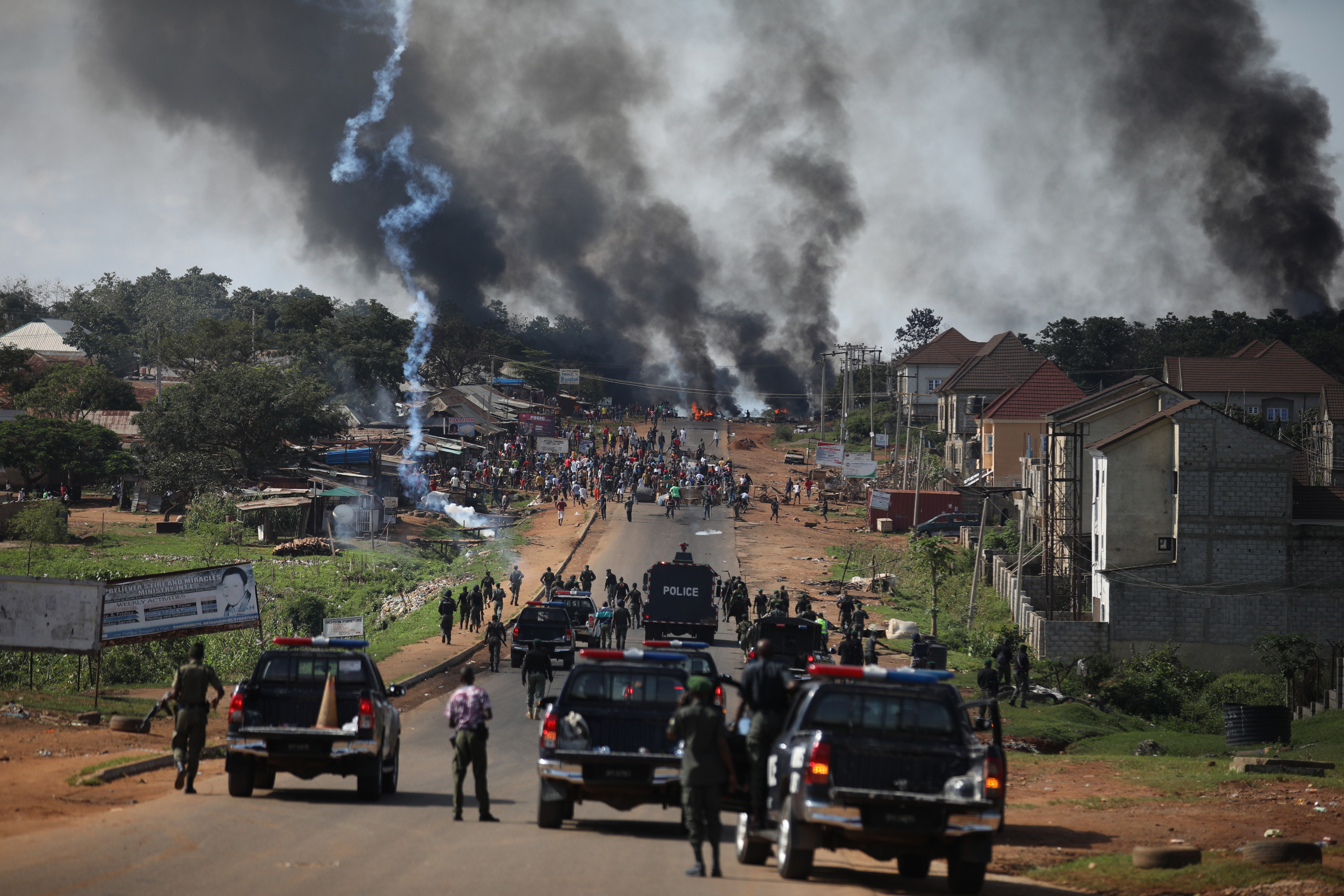
On Oct. 20, Nigerian security forces fired shots at unarmed protesters, killing 12 people and injuring many more, in what has come to be known as the Lekki toll gate massacre. Adetona Omokanye, a photojournalist who had begun documenting the protests in Lagos since Oct. 8, was present at the scene. “As they [the army] was driving towards the toll gate, they started shooting. Like, on the spot, and people started running. I was scared. I never expected them to shoot at first.”
Initially, Omokanye, afraid for his life, tried to hide behind barricades. In the commotion, which lasted for hours as the Nigerian army approached protesters, shooting and trying to disperse them, at one point, he hid in a nearby gutter before regaining his composure. “I don’t know how I even began shooting [pictures] again. I was so lucky on that day that the soldiers didn’t see me with a camera, because they might as well have sent a bullet at me,” he said.

After the tragedy at Lekki, Omokanye was further disheartened. “After all this, they started denying that nobody gave the order… It was an unknown soldier, blah blah blah. And I was like, I was there… I saw these people shooting at us. I saw it live. I was so disappointed by how everything played out… The military people denied it. The state government denied it. So who sent these people? Who are they? Where did they come from?”
Like Omokanye, photographer Anthony Obayomi began documenting the protests on Oct. 8. “The protests were full of energy and gave hope of a brighter future to many Nigerian youths,” Obayomi told me. “The gatherings were largely peaceful, with young people caring for each other during the protests, volunteering and donating food, drinks, medical aid, face masks, and other PPE,” he said.
Although protesters have withdrawn from the streets, the force of the movement has not gone away, according to Obayomi. “The city is still in a state of tension, many of the detained protesters are yet to be released and some are still making court appearances, facing charges that range from ‘disrupting the peace’ to ‘terrorism,’” he said.
He continued, “Many individuals and groups who organized or contributed to the protests have had their bank accounts frozen. Conversations continue online about when it would be safe to resume protesting. and generally, younger people have become more interested in the political conversations of the country.”
Abuja
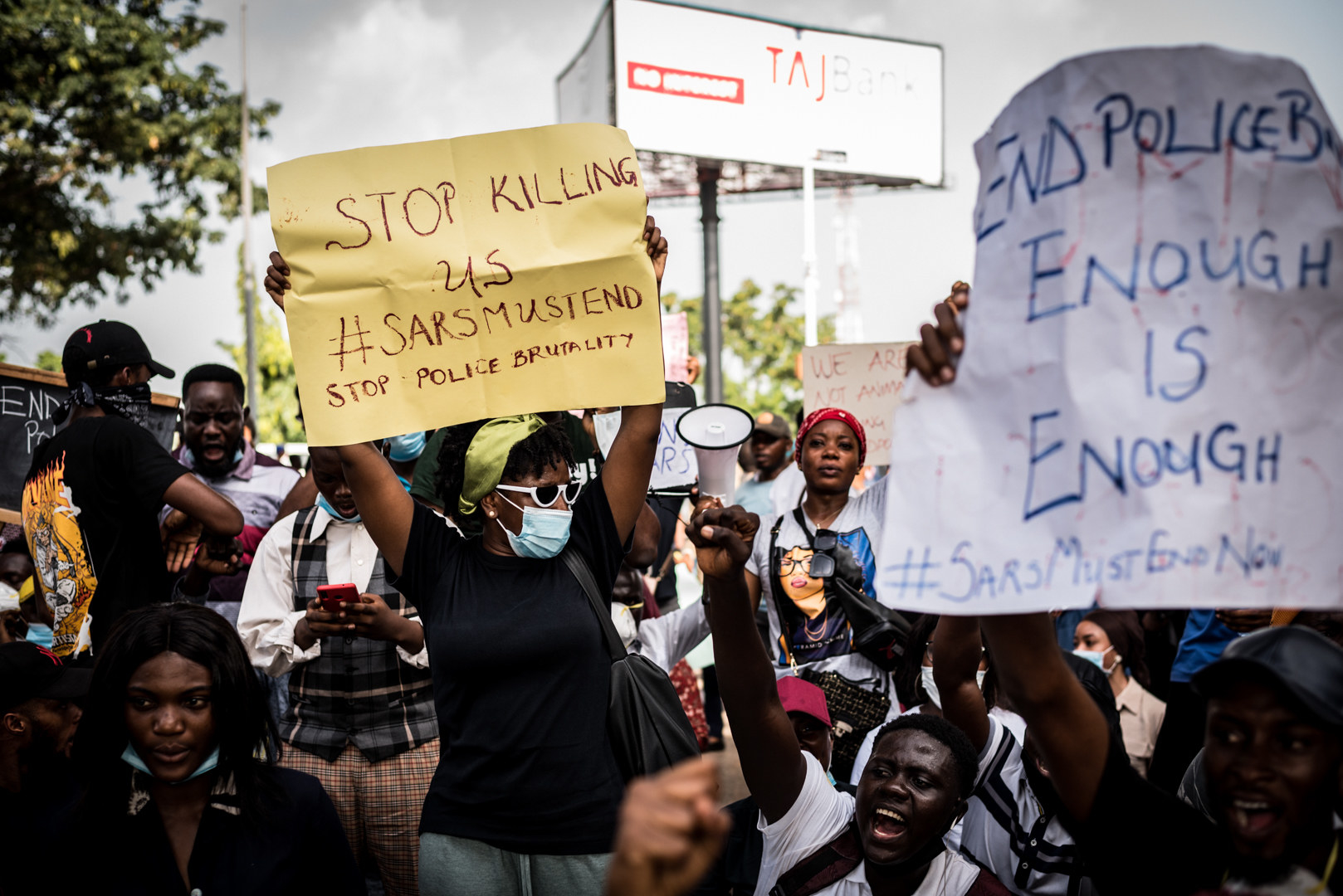
Built in the 1980s and strategically positioned in the country’s geographical center, Abuja is Nigeria’s official capital and is one of the continent’s fastest-growing cities. In a country with so much ethnic diversity and thus ethnic tensions, Abuja was intentionally designed to be a place for national unity.
While it’s unclear how successful that project has been, Etinosa Yvonne, who is based in the city, captured Nigerians coming together since Oct. 10. “The atmosphere during the protests were highly liberating and gave me hope. I had never imagined that Nigerians will be able to see past religion, ethnicity, and social class and come together to march for a common cause,” she said.
Yvonne also pointed out, as many of the photographers did, that the demonstrations became about much more than police violence. “Although the protests were genuinely meant to call for the disbandment of the Special Anti-Robbery Squad, the protesters also spoke out against bad governance which has been the bane of Nigeria’s stunted development.”
Yvonne said protests in Abuja started to die down on Oct. 19, a day before the Lekki massacre. Since then, the impact of the protests hasn’t necessarily been felt, although not everyone has simply returned back to their old life. “To an extent, it feels like everything is back to how things were. However, not everyone has moved on, especially those who were brutalized during the protest,” she said.
Jos

Socially and culturally considered part of northern Nigeria being located in the center of the country, Jos is one of Nigeria’s most picturesque cities with scenic hills, waterfalls, and rock formations. It has also historically been the site of religious tensions between Christians and Muslims.
Jos-based photographer Benedict Gobak said the citywide protests began effectively on Oct. 10. though he started his documentation of #EndSARS on Oct. 13. “At first, the state officials did not take the protest seriously, but when the number of protesters started increasing, at some point the police tried to sabotage the protest, throwing tear gas at protesters. But protesters resisted and it became difficult for the state officials to handle, they tried to intervene but it was already too late.”
Gobak also said the #EndSARS movement in the city prior to Oct. 20 illustrated solidarity among groups that are sometimes on opposing sides. “The protests in Jos were very peaceful, none of the protesters had any weapon in hand or tried attacking any convoy or any security personnel. What I saw during the protest was unity, the Muslims and Christians were out together protesting for the same thing, looking after each other and protesting side by side,” he said.
Since Oct. 20, however, following the events at Lekki, Gobak said groups of people who hadn’t been part of larger protests began disrupting them and the government imposed a curfew in response. Now, nearly two months later, like so many of those on the ground, he doesn’t see any immediate changes. “Nothing has changed really, still the same things happening every day. The police are still corrupt. The government is still corrupt. This is one of the reasons why the #EndSARS protesters want to continue with the protests,” he said.
Port Harcourt
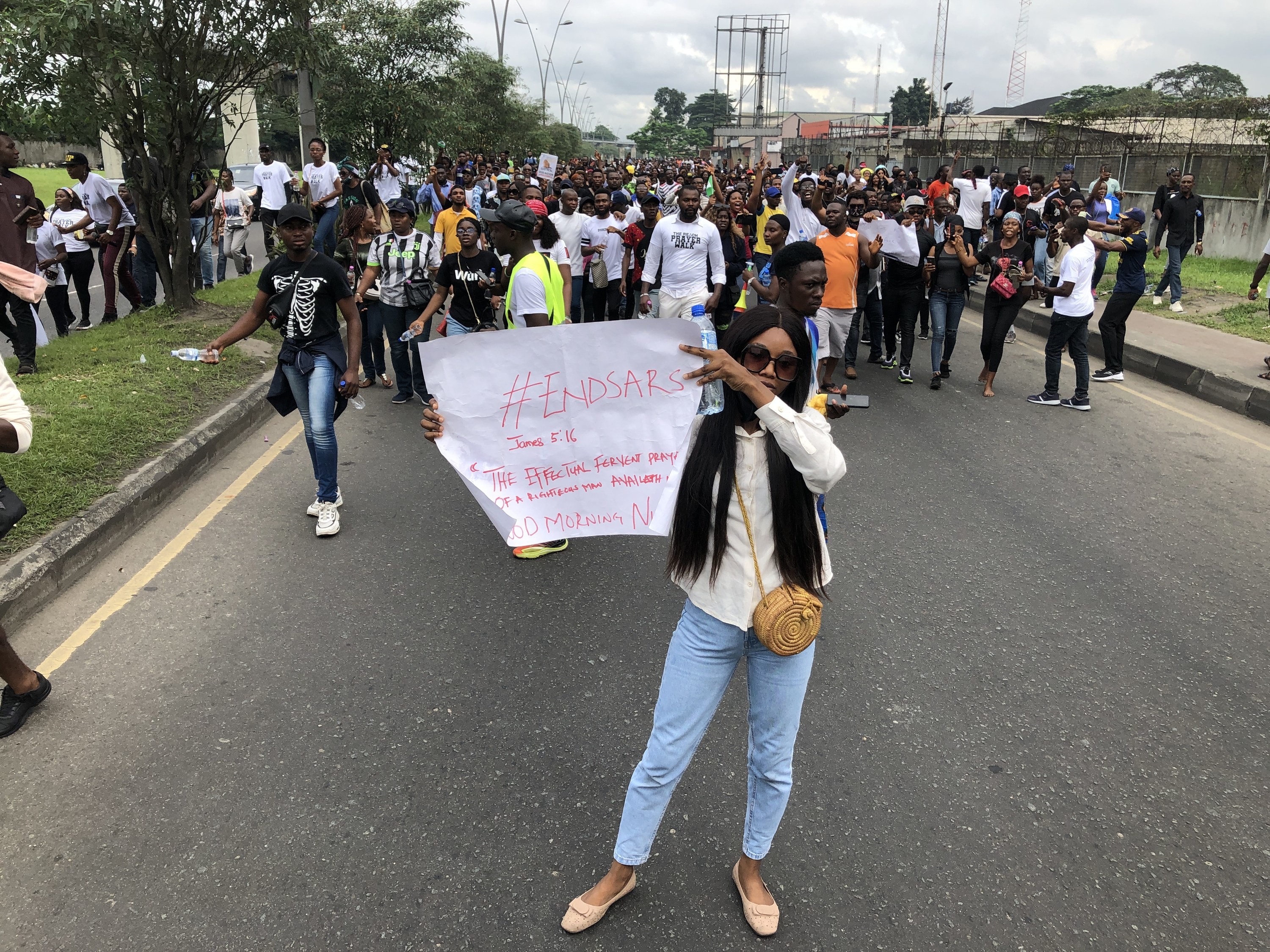
Known to most Nigerians by its acronym “PH,” or as Pitakwa, Port Harcourt is the center of Nigeria’s oil industry. Located in the Niger Delta, Port Harcourt has a history of resistance against the government of Nigeria, protesting the unequal distribution of wealth and environmental devastation in the region. Aside from its oil and oil-related manufacturing industries, PH is also known for its vibrant nightlife and entertainment culture.
Documentarian and photographer Tatchero Fidelis started following the protests in Port Harcourt on Oct. 13. “State officials were calm but fully equipped to tackle any violence from protesters. A couple of hours after we converged at the government house, the governor of the state, Ezenwo Nyesom Wike, graced us with his presence and gave a speech.” Just a day earlier on Oct. 12, Wike had released a statement saying that all #EndSARS protests were to be “prohibited.” The determination of the protesters in the city resulted in him doing an about-face.
Like the rest of the country, following the Lekki massacre, the protests in Port Harcourt died down. But Fidelis said the changes it has brought to the city have been palpable. “We have less police officials on the road now, although the crime rate has nominally increased. [This has led to] vigilante groups dedicating their time to fighting crime,” he said.
The government has historically targeted photojournalists like Fidelis. Aware of this, Fidelis nonetheless persists and even suggested that unpredictability is baked into the everyday experience of Nigerian life. “With the uncertainty and no regard for photojournalism in Nigeria as a whole, every activity puts you at risk in Nigeria,” he said.
The Diaspora
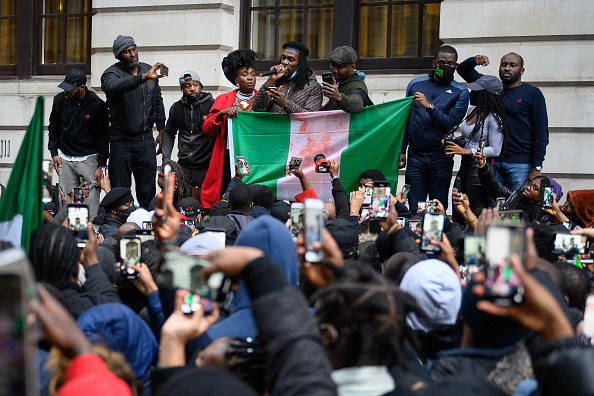
The Nigerian Diaspora is said to be about 15 million strong throughout the world. In October’s #EndSARS protests, the diaspora played a key role in financially supporting protesters in the country, amplifying the events on social media, and leading demonstrations in cities around the world.
There were protests all over the UK but crowds were especially large in London, which has one of the largest Nigerian diasporas. In fact, London was one of the first cities outside of Nigeria to have demonstrations, as people of various national origins marched in solidarity. Notably, protests continued days after Oct. 20.
Nigerians living in New York City led protests there as well. But it was also a collective effort among many people of numerous national identities protesting something familiar: police brutality. After all, just months earlier, the city, like so many others in the country and throughout the world had protested the killings of George Floyd and Breonna Taylor.
In Washington, DC, many Nigerian Americans protested outside the Nigerian Embassy. Protests in DC became quite intense following the Lekki massacre. The city also held its own candlelight vigil to remember those who had died at the hands of the SARS.
In a year of resurgence of #BlackLivesMatter protests and #EndSARS protests, the collective global experience of police brutality — and resistance to it — has never been more clear. ●
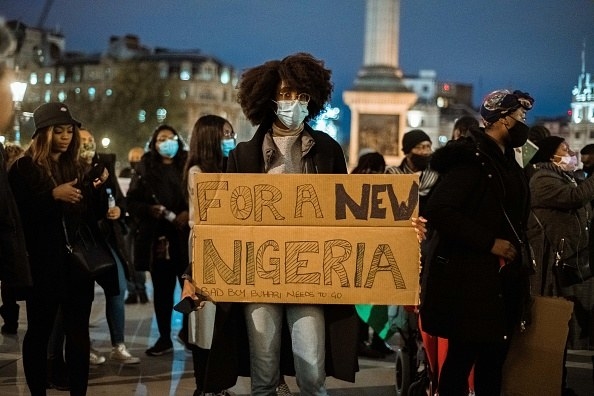
Kovie Biakolo is a writer specializing in culture and identity.

